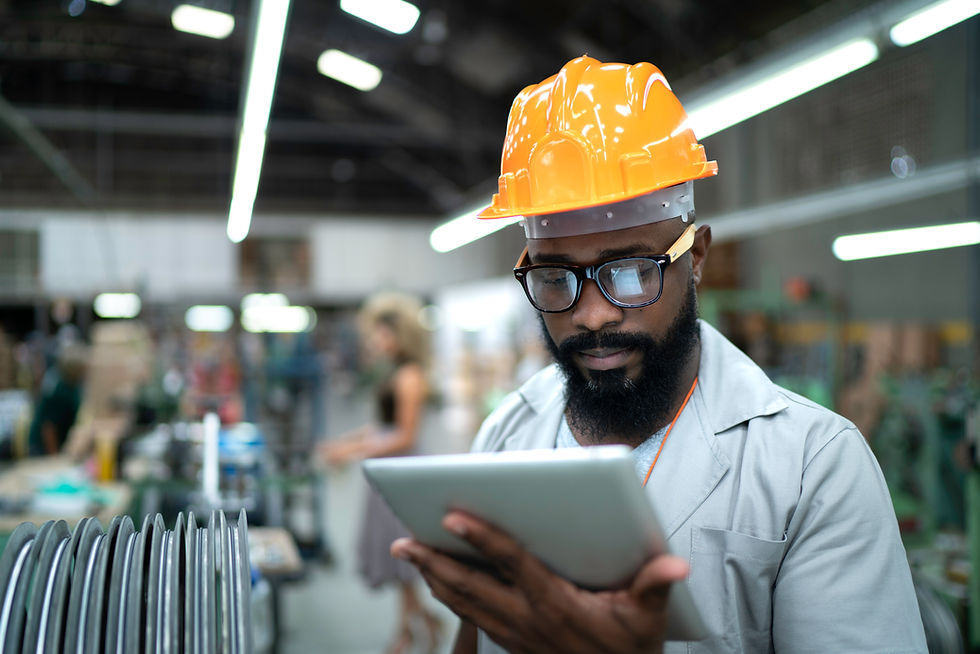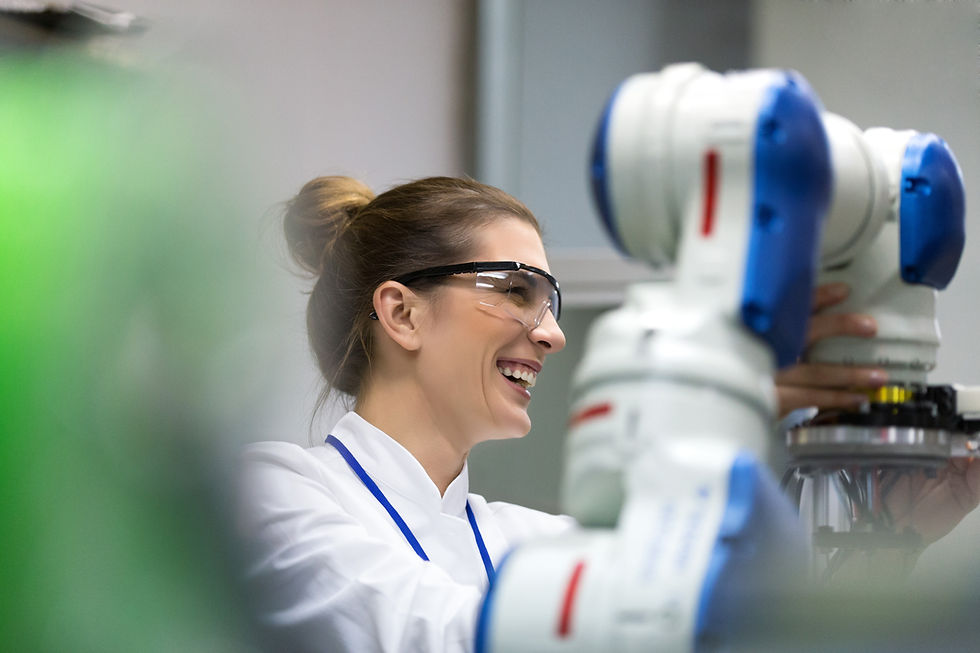Industry 5.0: The Synergy of Humans and Technology in Sustainable Manufacturing
- SV Vaikundam
- Aug 2, 2023
- 2 min read
Updated: Aug 2, 2023
The Industrial Revolution has been a major driving force of economic growth and development for centuries. The first four industrial revolutions have been characterized by the introduction of new technologies that have revolutionized the way we produce goods and services.
The fifth industrial revolution, also known as Industry 5.0, is no different. Industry 5.0 is a new paradigm for manufacturing that combines the physical and digital worlds to create more intelligent, flexible, and sustainable production systems.

Understanding Industrie 5.0
Industry 5.0 is a term used to describe the next stage of industrial development. It is characterized by the convergence of physical and digital technologies, the use of artificial intelligence (AI) and machine learning (ML), and the focus on human-centricity and Sustainability.
Industry 5.0 builds on the foundations of Industry 4.0, which was characterized by the use of automation, robotics, and big data. However, Industry 5.0 goes one step further by placing humans at the center of the production process and ensuring Sustainable Manufacturing.

Why Industrie 5.0 Matters
Industry 5.0 is important for a number of reasons. Below are the top three !!
It has the potential to improve productivity and efficiency in manufacturing.
It can help to create more personalized and customized products.
It can make manufacturing more sustainable.
Human-Centric Approach: While Industry 4.0 emphasizes automation and machine-driven processes, Industry 5.0 could place greater emphasis on a more human-centric approach. This means integrating human intelligence, creativity, and problem-solving skills with advanced technologies to enhance decision-making and problem-solving capabilities.

Collaboration Between Humans and Machines: Industry 5.0 may promote seamless collaboration between humans and machines, leveraging the unique strengths of both. Human workers would interact more closely with intelligent machines, sharing expertise and responsibilities in a mutually beneficial manner.

Ethics and Sustainability: Industry 5.0 could emphasize the ethical and sustainable use of technologies in manufacturing and industry. It might prioritize environmentally friendly practices, responsible AI deployment, and consideration for social impact.

Augmented Intelligence: Rather than replacing humans, Industry 5.0 might focus on augmenting human capabilities through advanced technologies like augmented reality, virtual reality, and AI-assisted decision-making.

The Evolution of Industrie 5.0
While both Industry 4.0 and Industry 5.0 are focused on digitizing and transforming the manufacturing sector, they have distinct differences:
Degree of Automation: Industry 4.0 emphasizes full automation, often minimizing human involvement. In contrast, Industrie 5.0 promotes human-machine collaboration, leveraging the strengths of both.
Human-Centric Approach: Industry 5.0 places humans at the center of the manufacturing process, recognizing their critical role in creativity, decision-making, and adaptability. Industry 4.0 is more focused on optimizing processes without necessarily emphasizing human involvement.
Complex Decision Making: Industry 5.0 involves humans in complex decision-making tasks, which may require empathy, intuition, and critical thinking – qualities that machines lack.
Conclusion
Industry 5.0 is the next stage of industrial development. It is a paradigm shift that combines the physical and digital worlds to create more intelligent, flexible, and sustainable production systems. Industry 5.0 is still in its early stages, but it has the potential to revolutionize the way we produce goods and services.




Comments